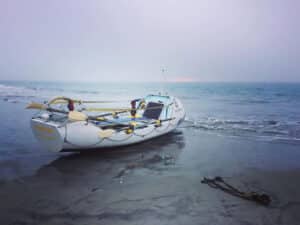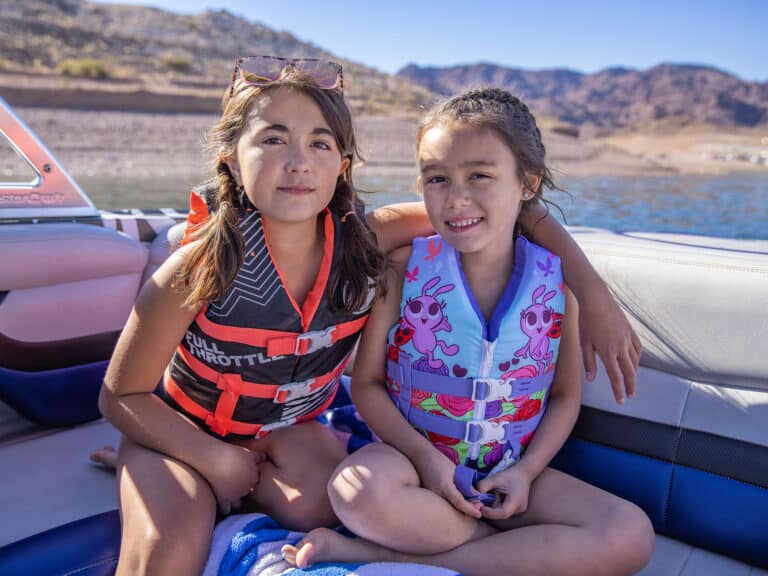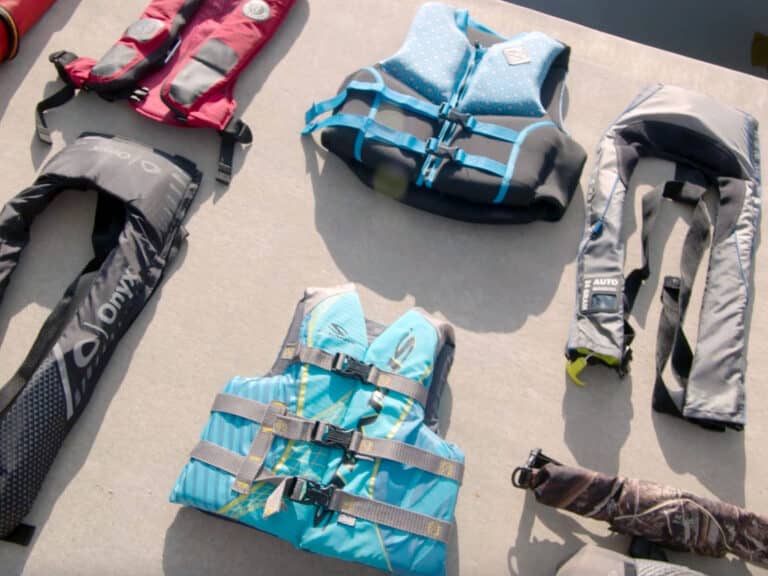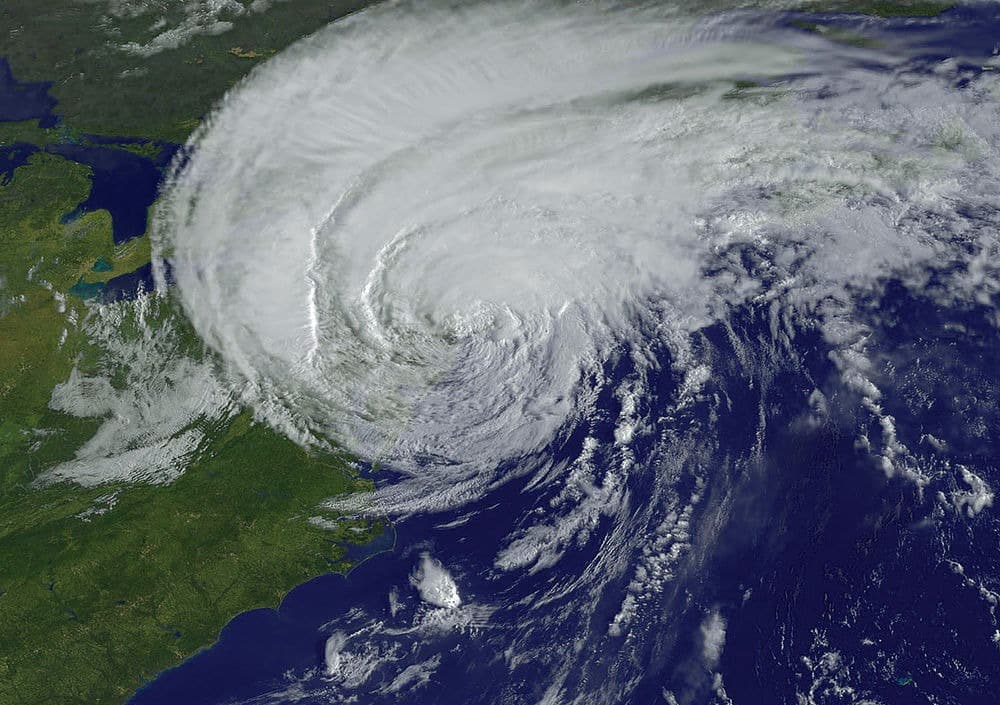
I’ve been in the path of more hurricanes than I recall the names of. A few come to mind: Bob, Georges, Floyd, Isabella, Charley, Frances, Jeanne, Katrina, Wilma and Irene. These tips came from those experiences.
Stay Afloat
Not long ago, floating docks weren’t safe to use in hurricanes. Now, storm-engineered floating dock systems survive Category 4 hurricanes, but that doesn’t necessarily make them safe. “Protected” waters just a quarter-mile wide by a half-mile long have churned into 8-foot seas in 100-knot winds. Also, in waterways fed by inland storm runoff, a “mild” tropical storm might drop a yard of rain that turns tranquil canals into rivers.
Hurricane Storage
Hurricane-rated dry storage facilities and many boat yards offer annual contracts to store boats during every named storm that threatens, often garnering insurance breaks for the boat owner.
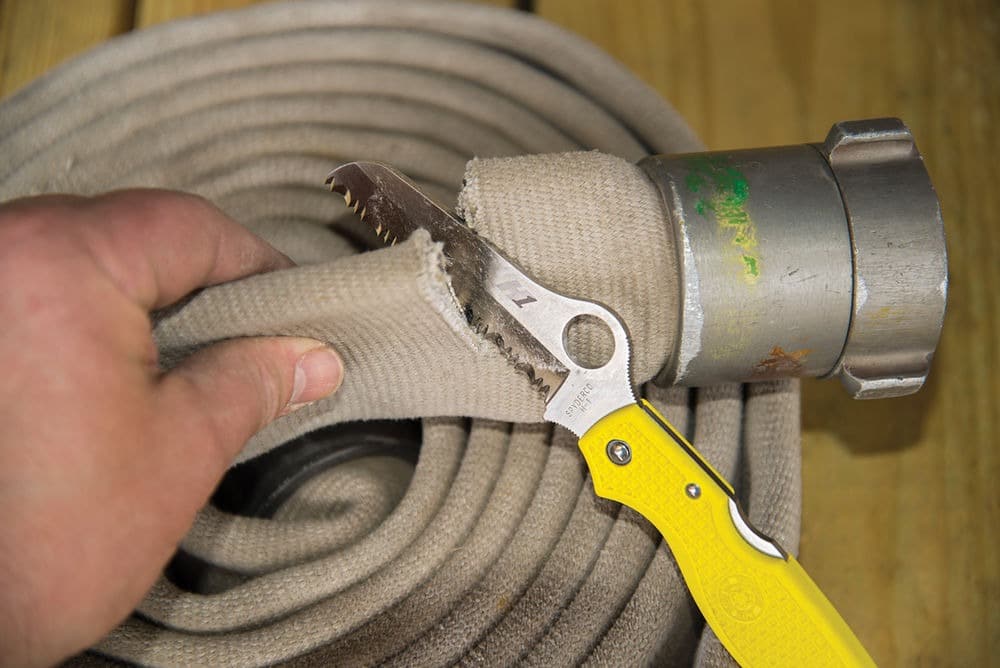
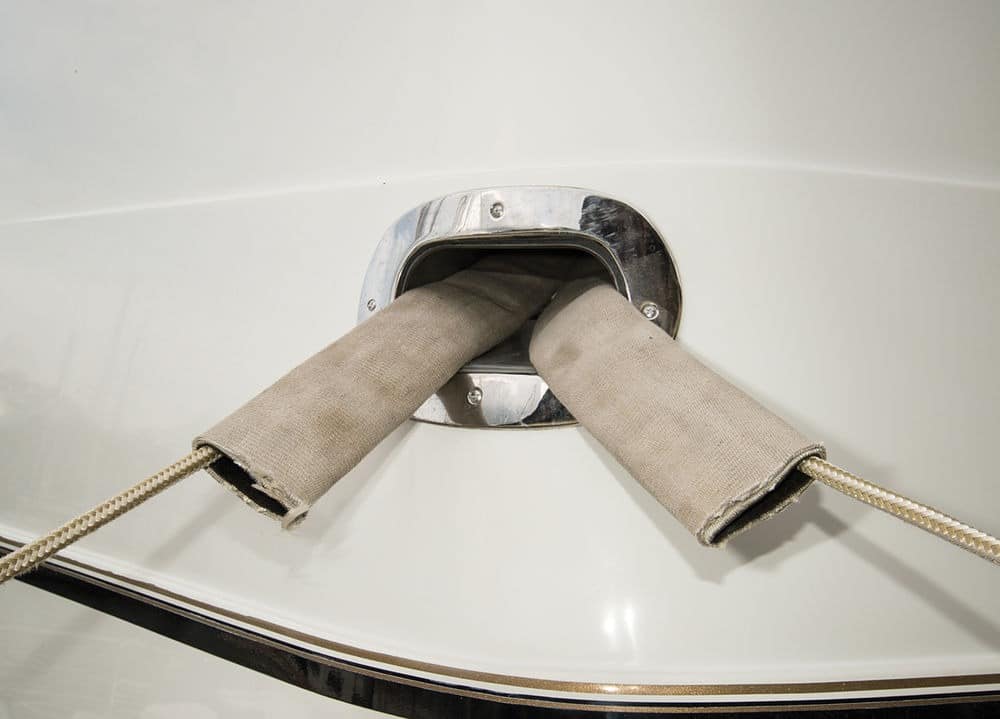
In a Slip
Anticipate that at least one cleat, piling or line will fail, so give each line a mate running in the same direction but attached at different places on both the boat and dock. To counter rising (or falling) storm tide, bypass the closest cleat or piling in favor of one farther away. Set an anchor across the marina, and once all boats are through moving, pull the rode tight with the windlass. Hang every fender you own.
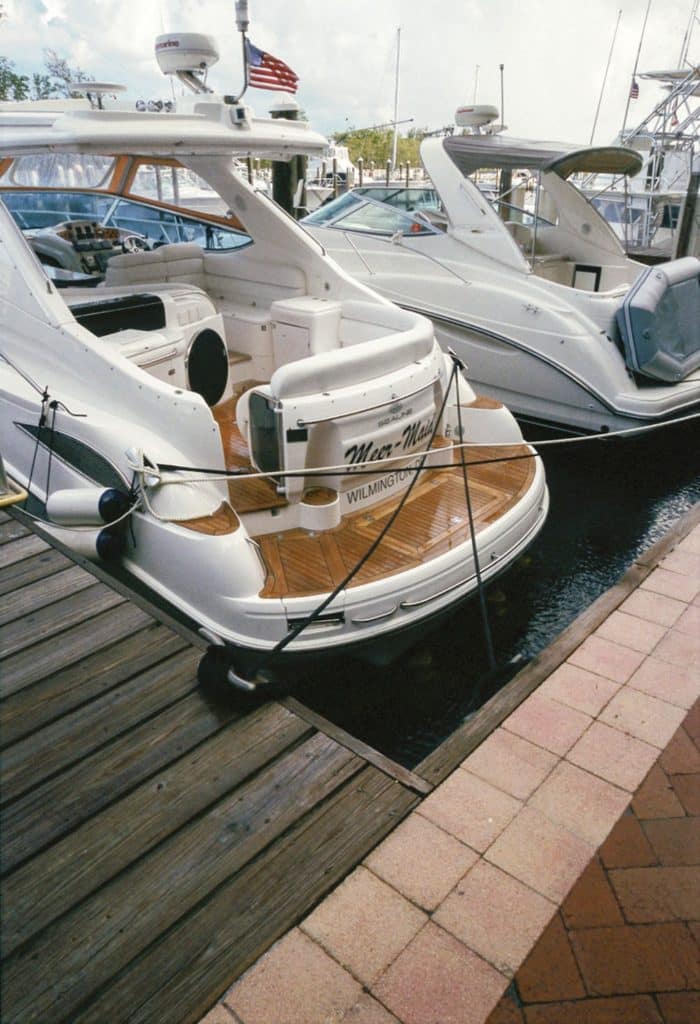
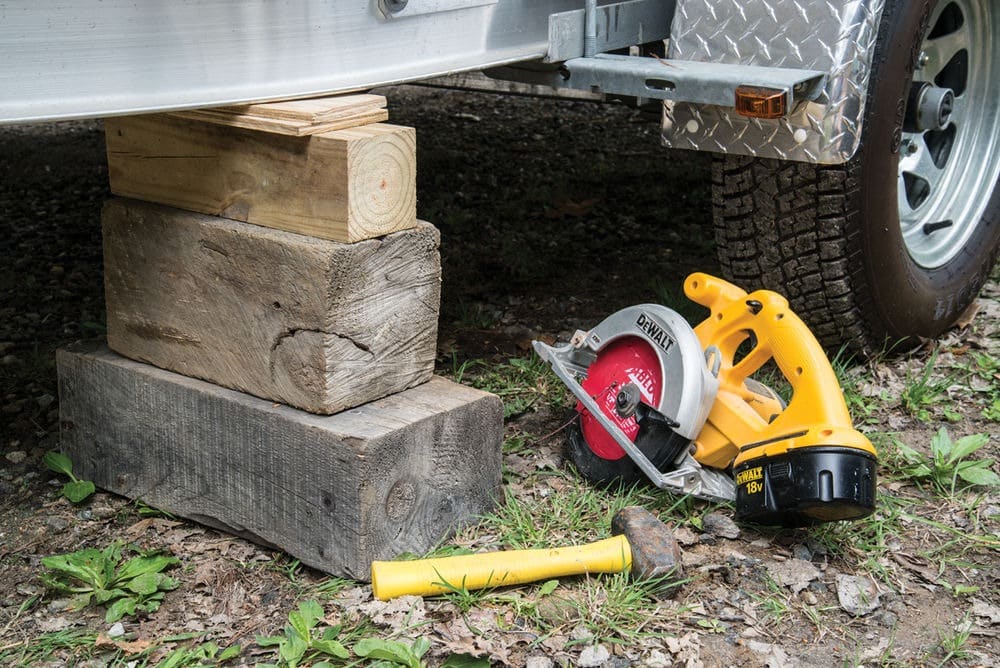
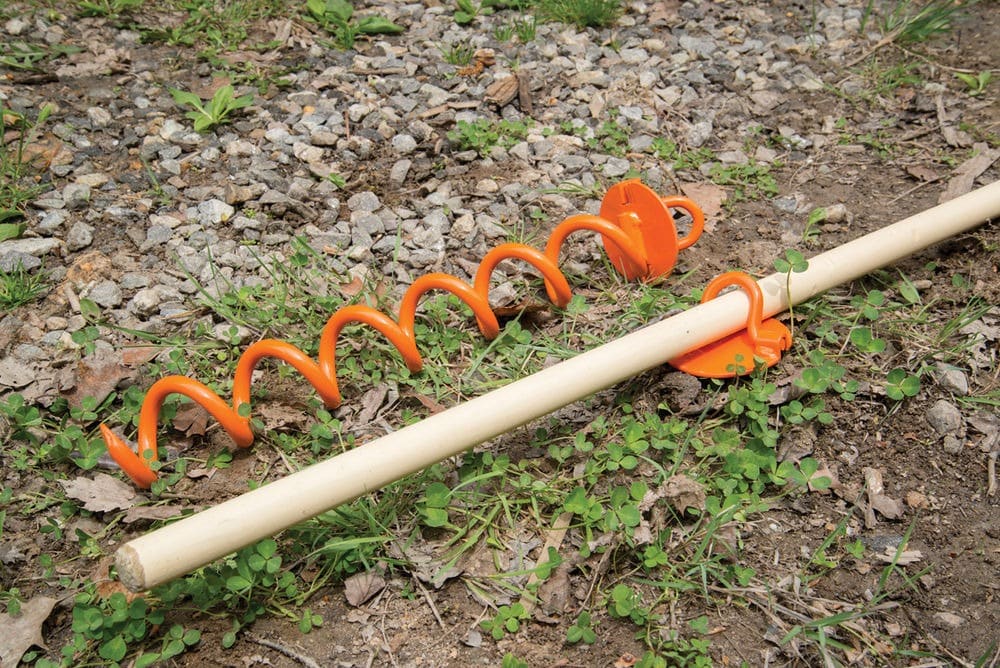
On a Trailer
Capt. Will Beck, owner of Sea Tow Palm Beach, says, “I can readily find an empty warehouse big enough for my eight trailerable boats.” Paying around $800 rent for three days, he says, “with what I save just in damage from blowing debris, it’s money well spent.”
Capt. Chris Shaffner, who owns TowBoatU.S. Palm Beach, keeps his trailered boats outside. “Get the boat as close as you can to a strong building — anything to break the wind,” he says. Avoid trees, power poles and also construction sites that create flying debris. Place blocks beneath the trailer frame on either side of the wheels, and then deflate the tires completely. Shaffner twists auger-type tie-down anchors into the ground using a broom handle. “Tie the boat to the trailer, and then tie the boat to those anchors,” he says.
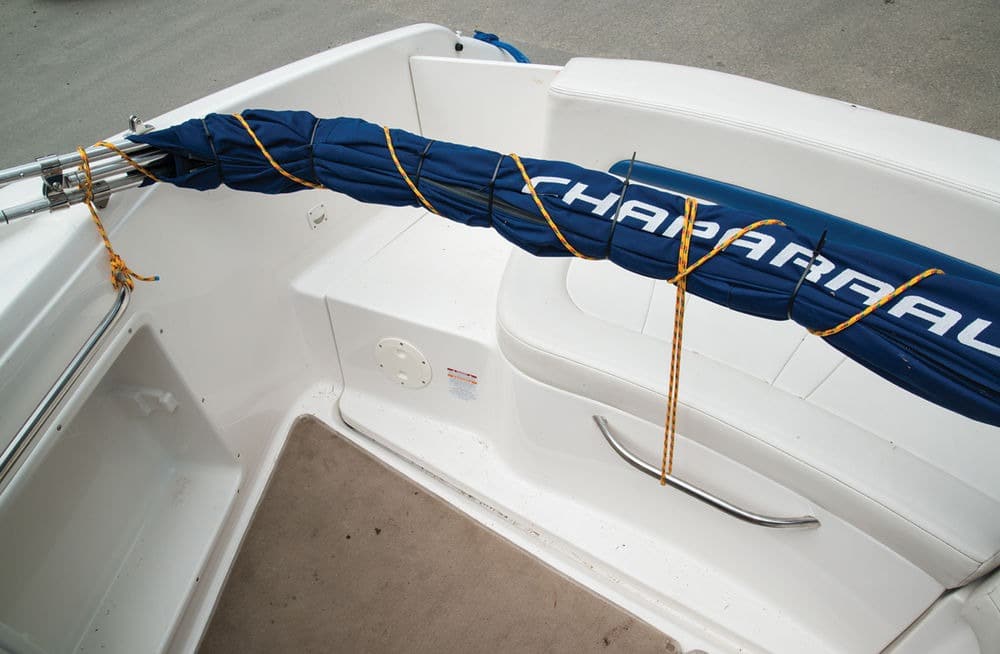
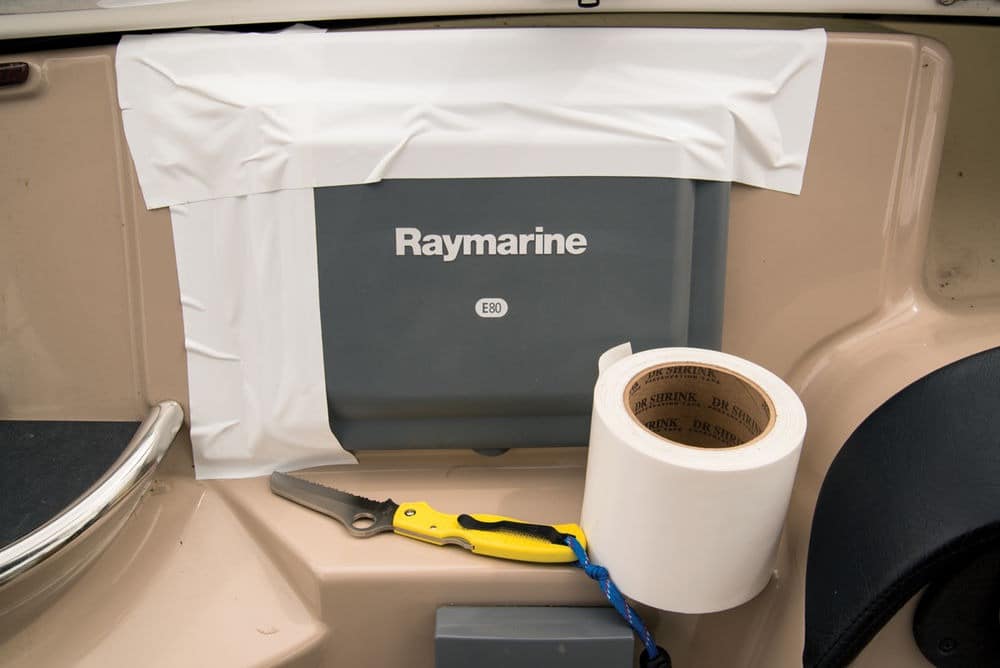
On a Lift
Lower a fixed lift 2 feet, tie the boat as if it were in a slip, and then raise the lift to put tension on those lines. Secure the boat to the lift.
Avoid Open Anchorages
“Hurricane holes” that we used to snug boats into now have waterfront homes with boats, and anchoring in open water doesn’t work. “No matter how good your ground tackle is, someone else’s will fail,” Beck says. “That boat takes out another, and they drift into a third. After a storm, we see hundreds of boats in clusters on the shore.”
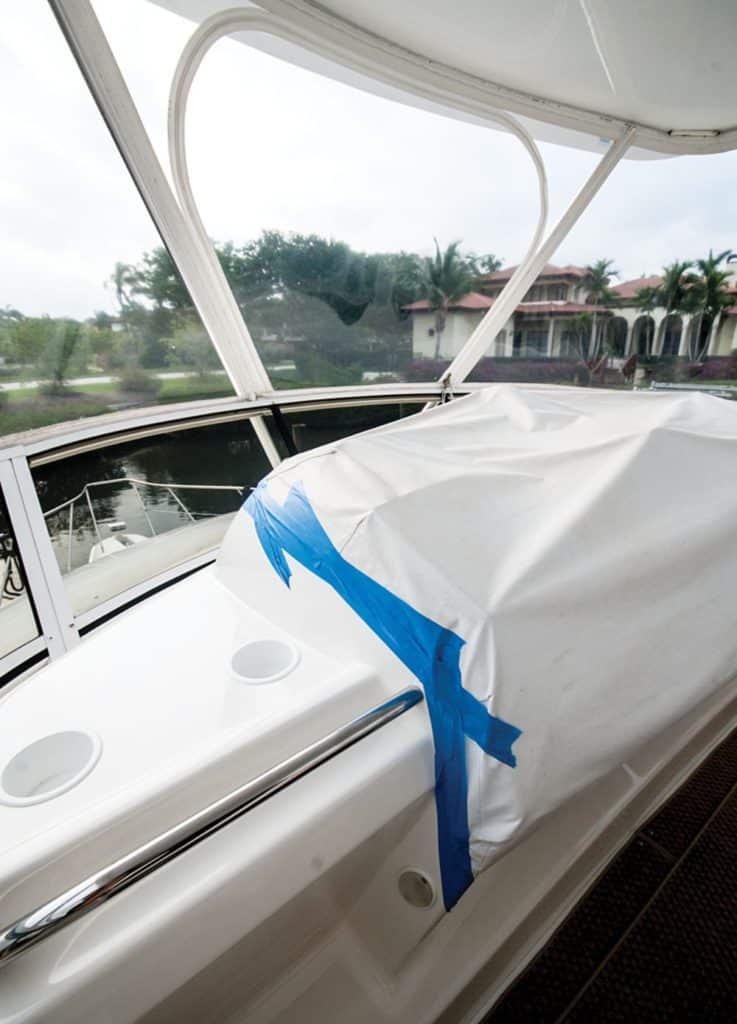
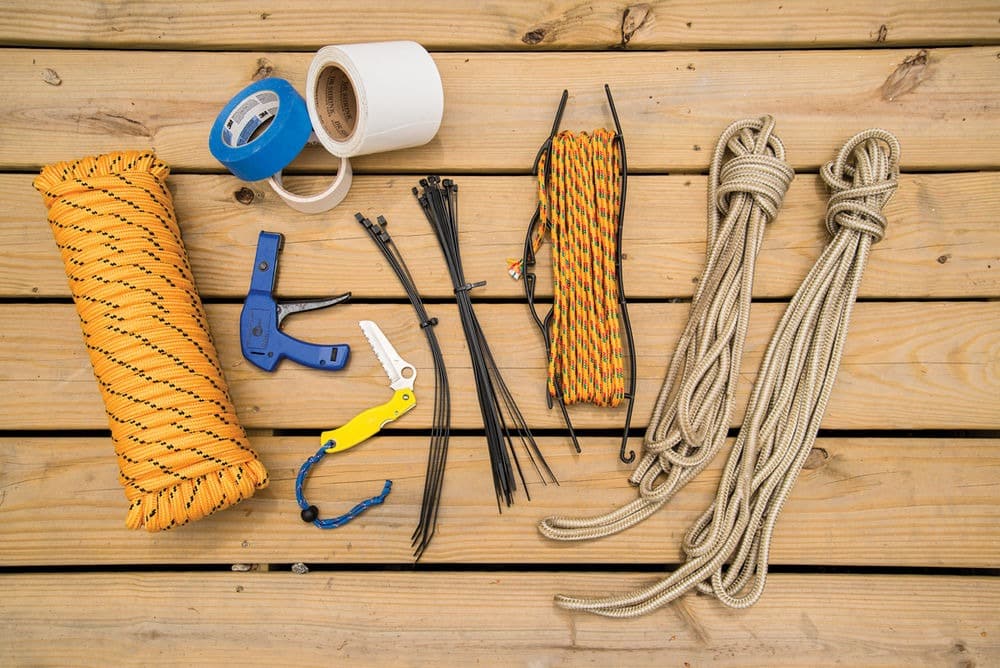
Run
“For the time you spend blocking a trailer, tying it down, removing the canvas and then putting everything back later, just get in the truck and move the boat away from the forecast track cone,” Shaffner says. (Head south of the forecast track; few hurricanes turn south.) Be sure the trailer is working at the start of the hurricane season.
* * * * *
The U.S. Coast Guard is asking all boat owners and operators to help reduce fatalities, injuries, property damage, and associated healthcare costs related to recreational boating accidents by taking personal responsibility for their own safety and the safety of their passengers. Essential steps include: wearing a life jacket at all times and requiring passengers to do the same; never boating under the influence (BUI); successfully completing a boating safety course; and getting a Vessel Safety Check (VSC) annually from local U.S. Coast Guard Auxiliary, United States Power Squadrons(r), or your state boating agency’s Vessel Examiners. The U.S. Coast Guard reminds all boaters to “Boat Responsibly!” For more tips on boating safety, visit www.uscgboating.org.




